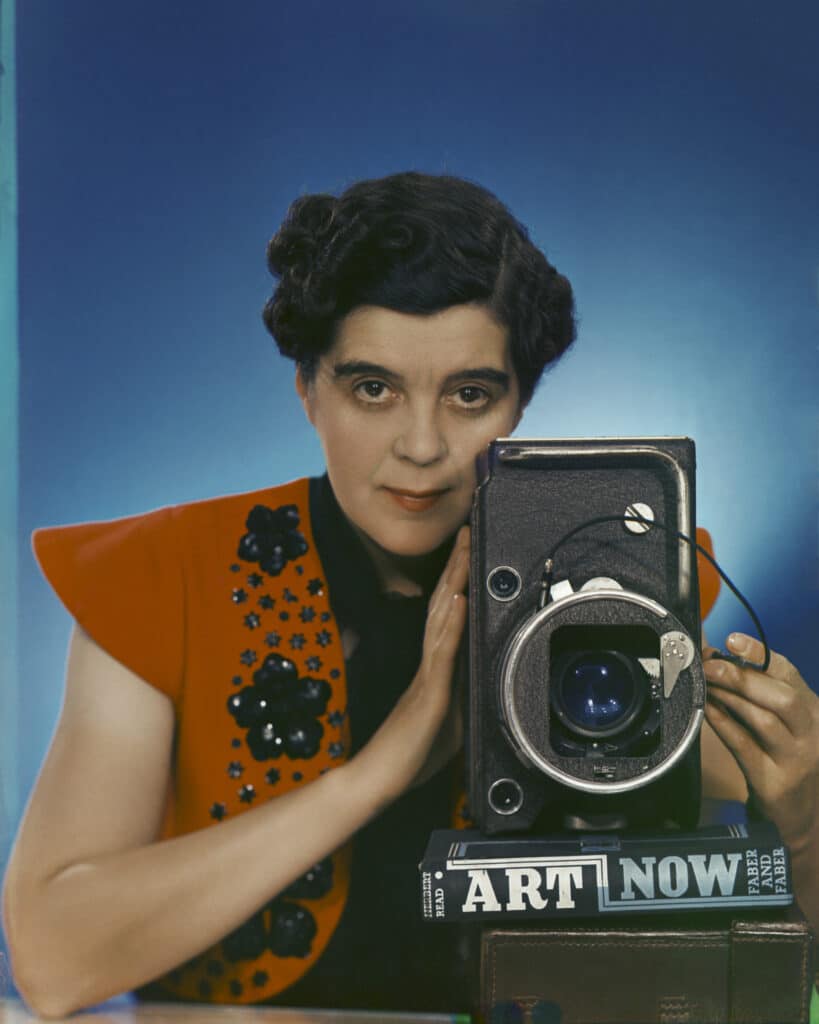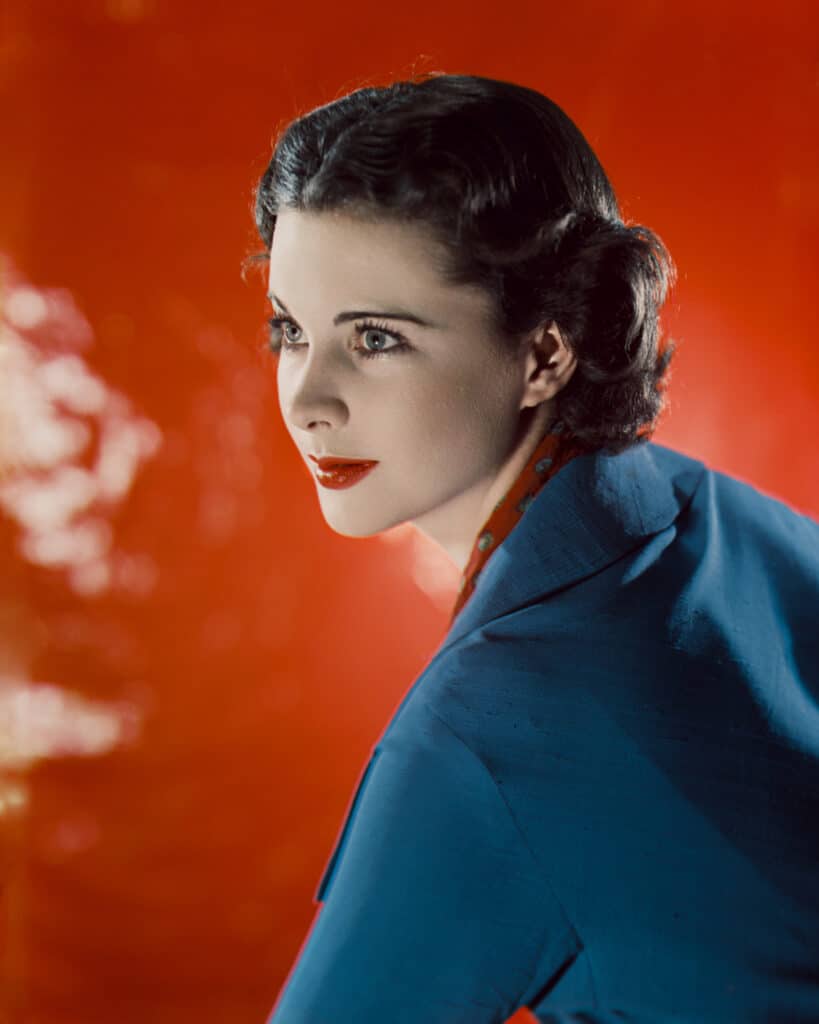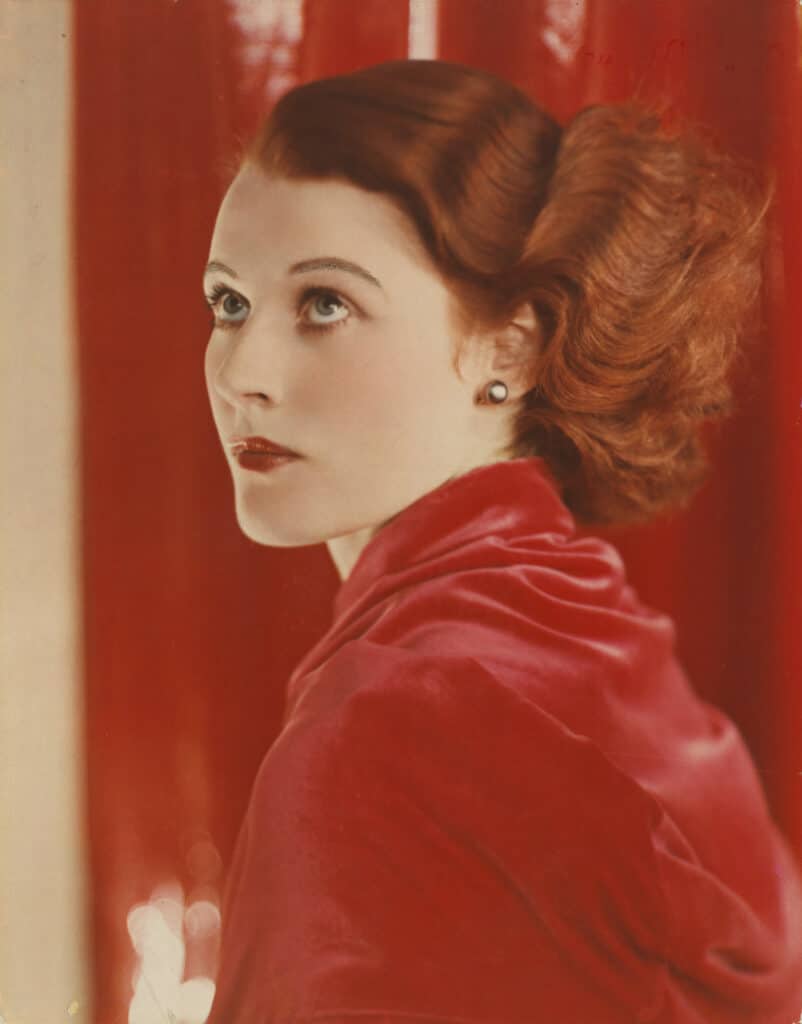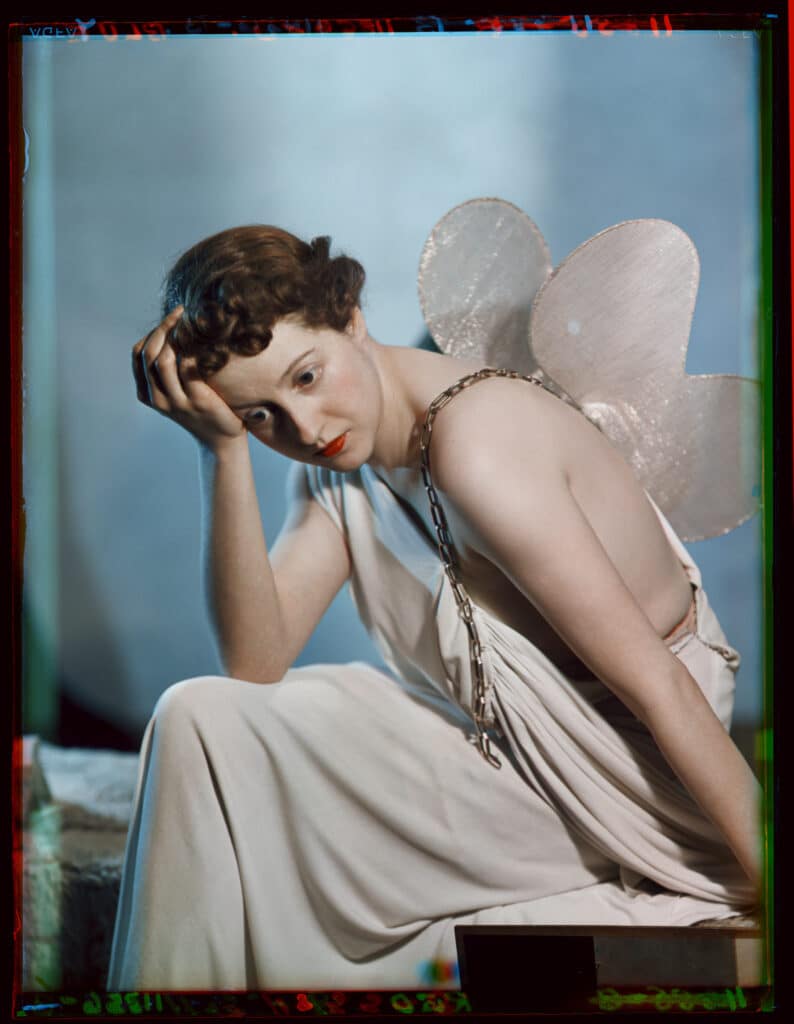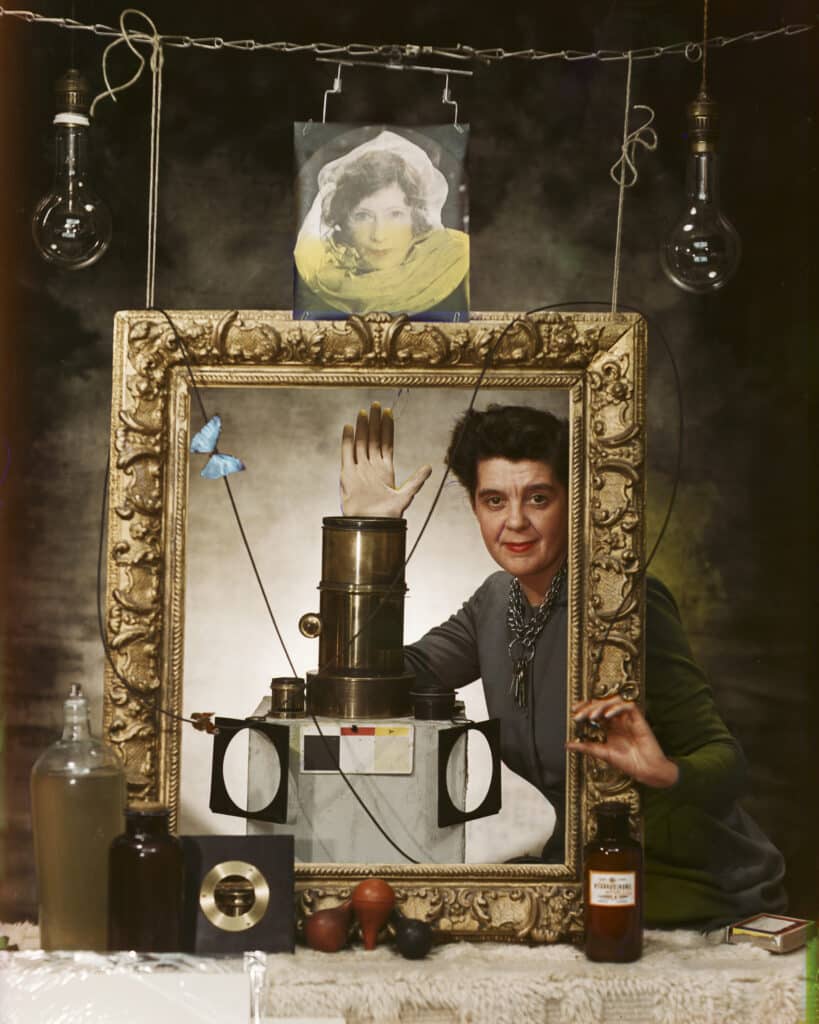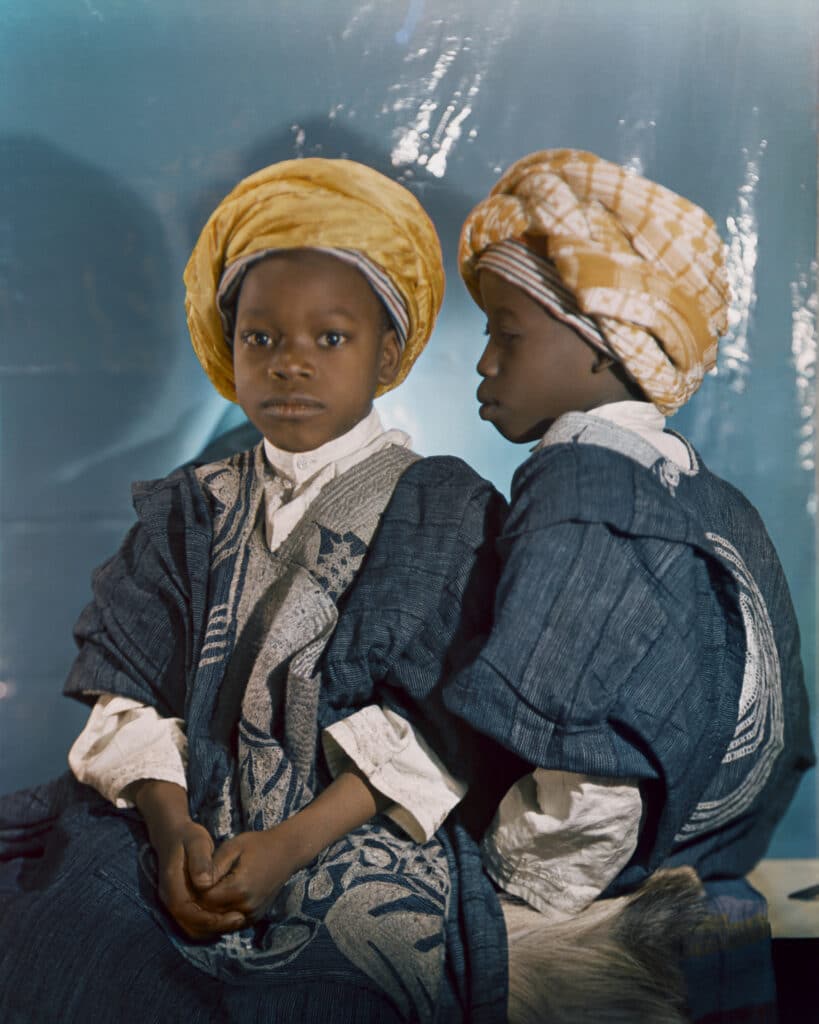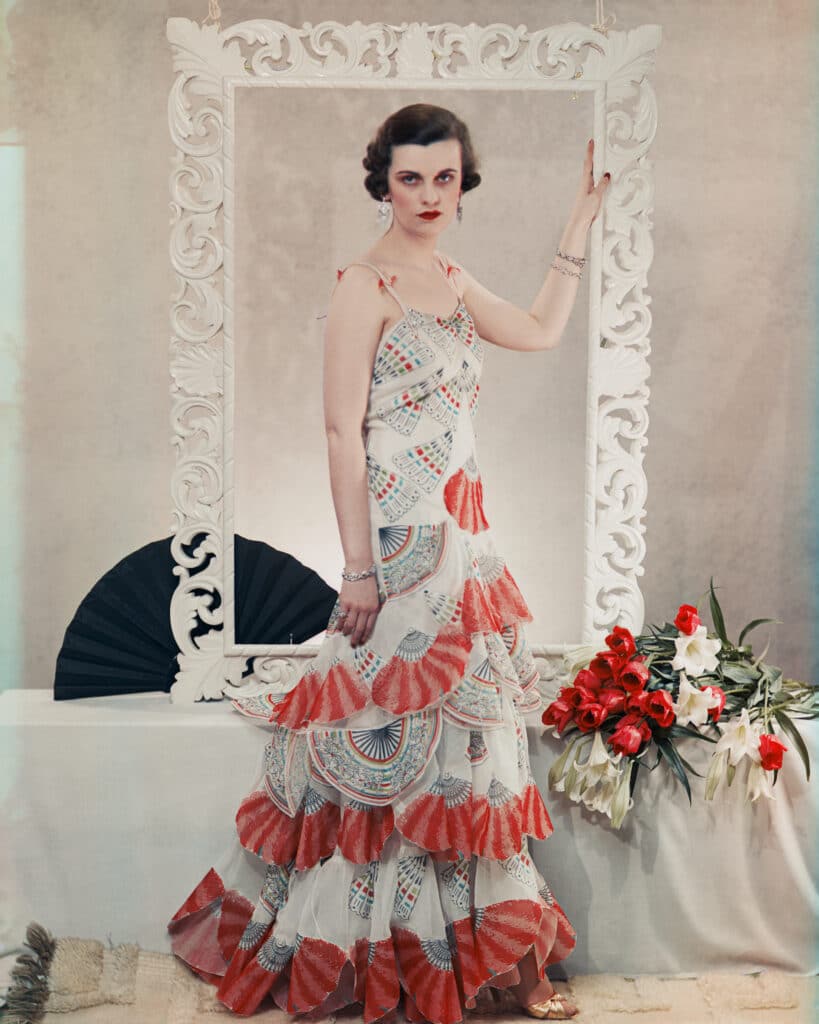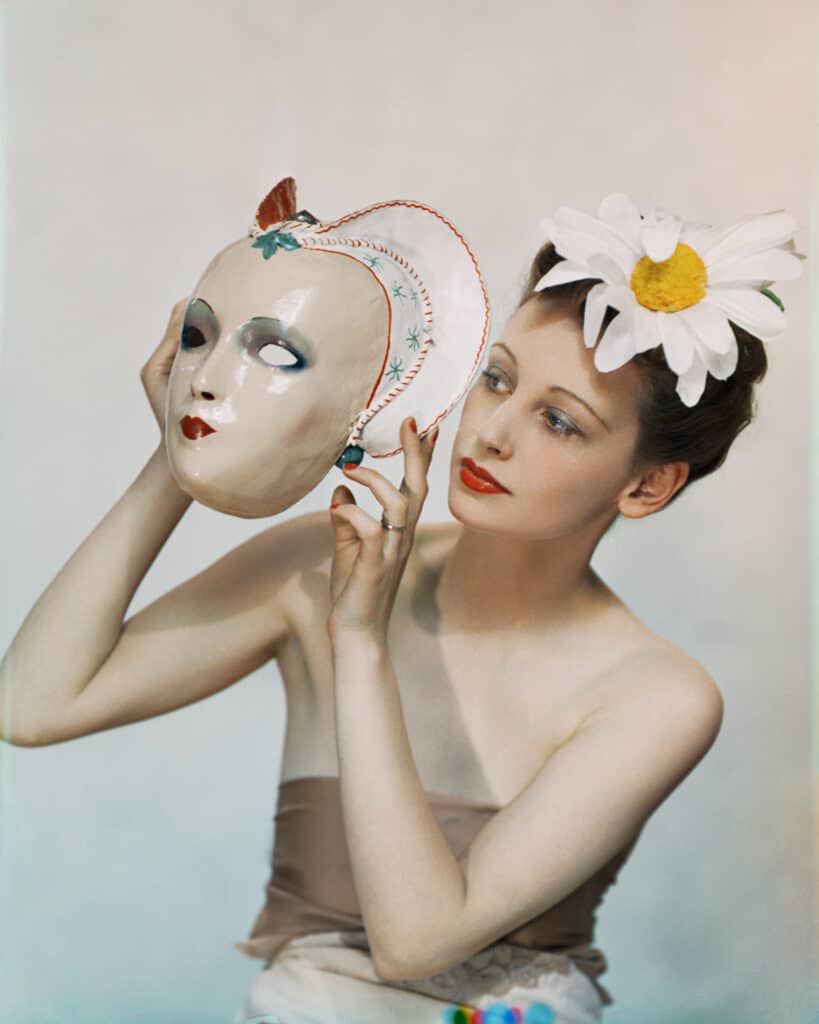“’Be original or die’ would be a good motto for photographers to adopt… let them put life and colour into their work”
Madame Yevonde
Standing before the Royal Photographic Society, British photographer and businesswoman Yevonde (1893-1975) addressed the group in a 1936 lecture she boldly titled, “The Future of Portraiture – If Any.”
“’Be original or die’ would be a good motto for photographers to adopt… let them put life and colour into their work,” she told the audience with the same daring aplomb she brought to her three-decade career creating studio portraits of London society.
Color photography had just landed in the country and Yevonde immediately embraced the intense, intoxicating possibilities of the medium. In it’s first century, photography had democratized the portrait, while simultaneously liberating the image from the narrow confines of documentation.
In Yevonde’s hands, color created a space to experiment and explore with the painterly qualities of the form. She cast leading stars of stage and screen like Vivien Leigh and John Geilgud as gods and goddesses sent down to earth, capturing the surreal space where they were both human and divine in a world just starting to modernize.
Over a period of six decades, Yevonde lead the charge, pushing the photography ahead of the curve, long before color was given proper regard. In the new exhibition and catalogue, Yevonde: Life and Colour, the National Portrait Gallery, London, charts the 60-year career of the artist who photography.
The Birth of Madame Yevonde
Portrait photography proved the perfect medium for Yevonde who set herself apart from a young age, preferring to be financially independent at a time when girls of her class were expected to devote themselves to marriage and motherhood.
Born Yevonde Cumbers in South London in 1893, she came to photography through the suffragette movement, briefly apprenticed with portrait photographer Lallie Charles, and opened her first studio in London in 1914. It was an auspicious start, and she excelled as both artist and entrepreneur.
In 1920, Yevonde did in fact marry but had no interest in using her legal name, Mrs. Edgar Middleton. Instead she became Madame Yevonde the following year through curious circumstance. She had sent a manuscript of her lecture, “Photographic Portraiture from a Woman’s Point of View” to the British Journal of Photography.
They sent back a letter, keen to publish the text, but not without making it clear of their politics. The letter read: “The fresh ideas, unconventional outlook and lively imagination of you women photographers will carry you a long way. The gods give you these, but for some reason they do not give you a corresponding mastery of technique.”
Nevertheless, the letter insisted, there was business to be resolved. The writer made it clear her established professional name, Yevonde, would simply not suffice. And in that moment, she became “Madame Yevonde,” summarily subverting benevolent sexism into high camp.
“The superman at last has arrived in the person of a modern woman”
A thoroughly modern woman, Yevonde was perfectly poised to navigate her position in society crafting a glittering portrait of British aristocracy in between the wars. But with the arrival of Vivex color process in the 1930s, everything changed. She naturally embraced working in a medium with “no history, no tradition, no old masters, but only a future!” even if that meant she had to battle prevailing notions of color as unnecessary and unnatural.
“‘If we are going to have colour photography for heaven’s sake let’s have a riot of colour, and none of your wishy-washy hand-tinted effects,” Yevonde declared, devoting herself to experimenting with the form. She embraced the majestic mystery and subversive allure of Surrealism, creating glamour shots of Hollywood stars as gods and goddesses.
But by 1936, when Yevonde delivered “The Future of Portraiture – If Any” to the Royal Photographic Society, she understood the world of the studio photographer, was no longer an industry mainstay. The 1930s ushered in a golden age of glossy magazines and Yevonde’s mastery of color translated perfectly to print.
Though Yevonde would outlive her husband, Edgar Middleton, who died soon thereafter, perhaps he knew better than anyone else just what it meant for a new generation of women artists to take hold of their destinies. In his autobiography, I Might Have been a Success, Middleton wrote, “…in certain quarters it is freely being declared that George Bernard Shaw is right after all. The superman at last has arrived in the person of a modern woman.”
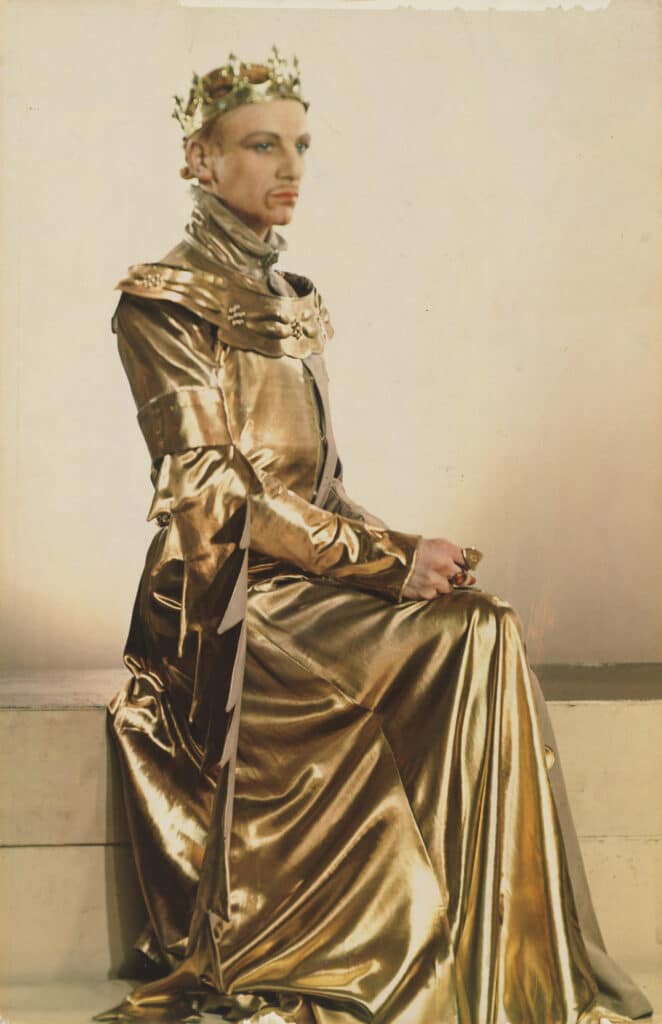
Yevonde: Life and Colour is on view at through October 15, 2023, at the National Portrait Gallery in London. The catalogue is published the National Portrait Gallery, $49.95.

